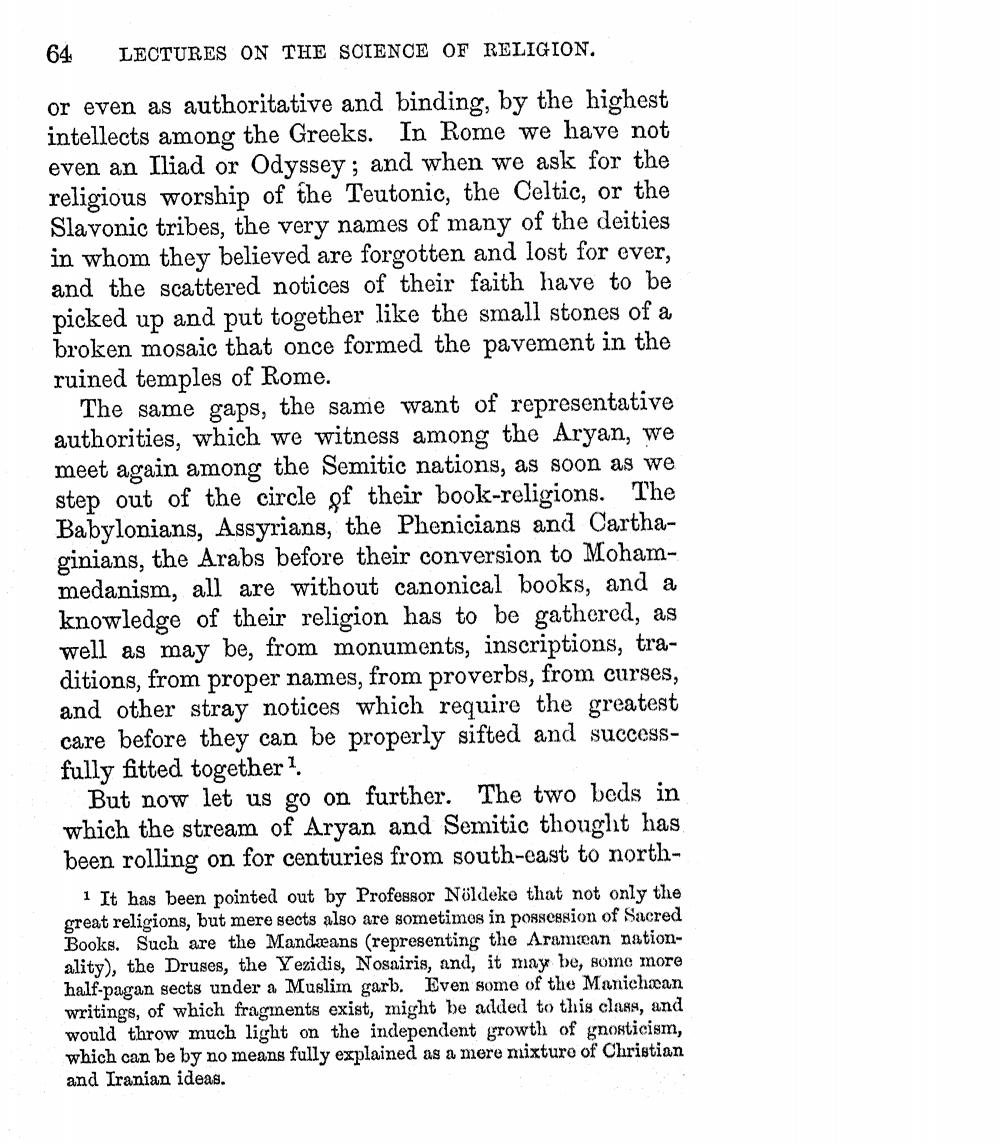________________
64
LECTURES ON THE SCIENCE OF RELIGION.
or even as authoritative and binding, by the highest intellects among the Greeks. In Rome we have not even an Iliad or Odyssey; and when we ask for the religious worship of the Teutonic, the Celtic, or the Slavonic tribes, the very names of many of the deities in whom they believed are forgotten and lost for ever, and the scattered notices of their faith have to be picked up and put together like the small stones of a broken mosaic that once formed the pavement in the ruined temples of Rome.
The same gaps, the same want of representative authorities, which we witness among the Aryan, we meet again among the Semitic nations, as soon as we step out of the circle of their book-religions. The Babylonians, Assyrians, the Phenicians and Carthaginians, the Arabs before their conversion to Mohammedanism, all are without canonical books, and a knowledge of their religion has to be gathered, as well as may be, from monuments, inscriptions, traditions, from proper names, from proverbs, from curses, and other stray notices which require the greatest care before they can be properly sifted and successfully fitted together?
But now let us go on further. The two beds in which the stream of Aryan and Semitic thought has been rolling on for centuries from south-east to north
1 It has been pointed out by Professor Nöldeke that not only the great religions, but mere sects also are sometimes in possession of Sacred Books. Such are the Mandæans (representing the Aramzan nationality), the Druses, the Yezidis, Nosairis, and, it may be, some more half-pagan sects under a Muslim garb. Even some of the Manichæan writings, of which fragments exist, might be added to this class, and would throw much light on the independent growth of gnosticism, which can be by no means fully explained as a mere mixture of Christian and Iranian ideas.




